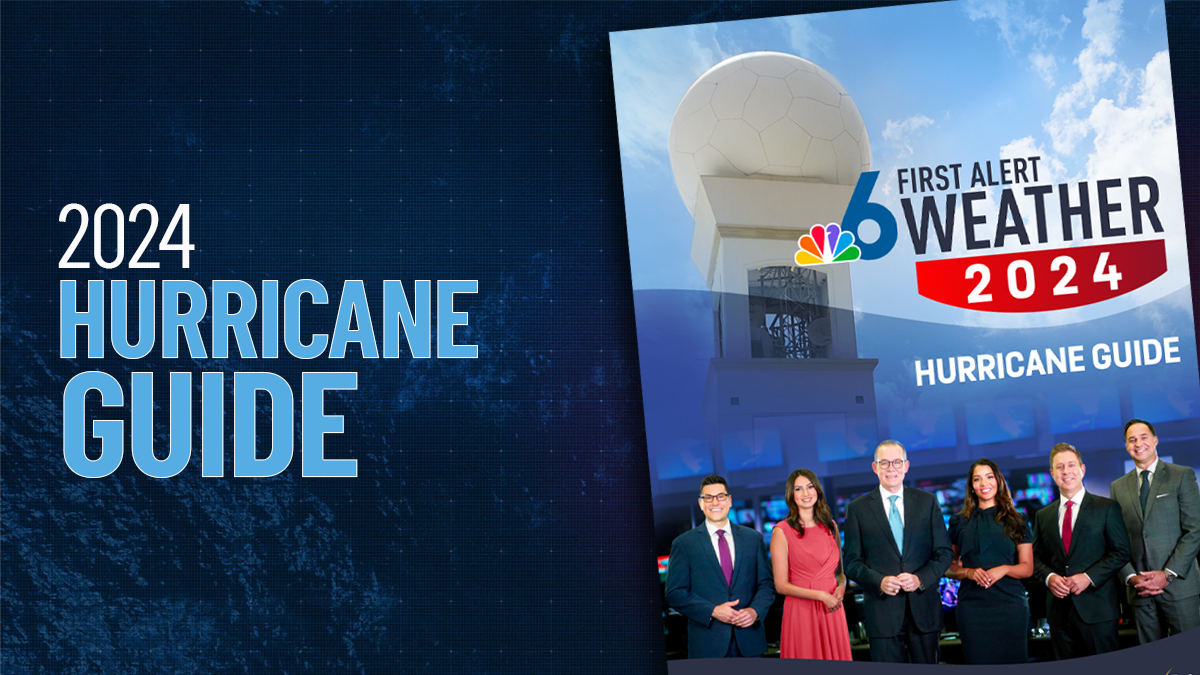It’s a lull, and it’s dull. But no one’s complaining.
Hurricane season has entered another deep snooze since Ernesto hit the British Virgin Islands and skirted by Puerto Rico as a tropical storm last week, then made landfall in Bermuda as a Category 1 hurricane last weekend.
Watch NBC6 free wherever you are
>We enjoyed similar “downtime” in July between Major Hurricane Beryl, which lost its tropical characteristics on July 9, and the naming of what became Hurricane Debby on Aug. 3.
A July lull in the tropics is par for the course. But one in late August is a bit surprising, especially given the expectations for an extremely active 2024 hurricane season.
Get local news you need to know to start your day with NBC 6's News Headlines newsletter.
>There’s been no shortage of coverage — particularly in blogs and social media — of the reasons behind this downturn in tropical activity in the Atlantic. Tropical waves, which serve as seedlings for hurricanes, have been moving off of the coast of Africa farther north than usual. That path has taken them over colder waters that are not conducive to the development of storms.
That part of the Atlantic, north of Cabo Verde and south of the Canary Islands, is also prone to larger and denser clouds of Saharan dust. When the Saharan Air Layer is present, moisture levels in the lower atmosphere can be half of what you’d normally find above the ocean in tropical latitudes.
If colder water and dry air weren’t enough, there’s also been too much of a “good” thing.
Hurricane Season
The NBC 6 First Alert Weather team guides you through hurricane season
Fledgling tropical storms don’t like westerly winds above them. It tilts them and prevents them from developing a strong nucleus. Now not only have westerly winds disappeared, but a strong easterly flow aloft has developed from Africa to the Caribbean! Weak winds from the east above a westward-moving tropical system favor its development. However, if they’re too strong, then wind shear can cause same storm tilt in the opposite direction, preventing hurricanes from forming.
Alas, none of these hostile conditions for hurricanes are expected to last.
Observed trends and model guidance indicate that easterly waves will revert to their normal tracks, closer to Cabo Verde. Sea surface temperatures west of that archipelago are still quite warm, sometimes record-hot.
The strong easterlies aloft should also end as the calendar turns to September. And Saharan dust historically wanes towards the end of August. That means that come September, hurricane season’s peak month, there will be plenty over the Atlantic to keep us anxious.
By every measure, this hurricane season is off to a remarkably active start, including two U.S. hurricane landfalls. The most striking statistic is the number of “major hurricane days”, which is running 543% higher than normal! That’s all due to beastly Beryl and the astonishing records it set in June and early July.
If things become very active in September, as expected, we’ll only add to this season’s tally. Therefore, enjoy this lull while it lasts. Take advantage of the tax-free holiday for hurricane supply purchases in Florida, starting this Saturday Aug. 24 through Sept. 6.



